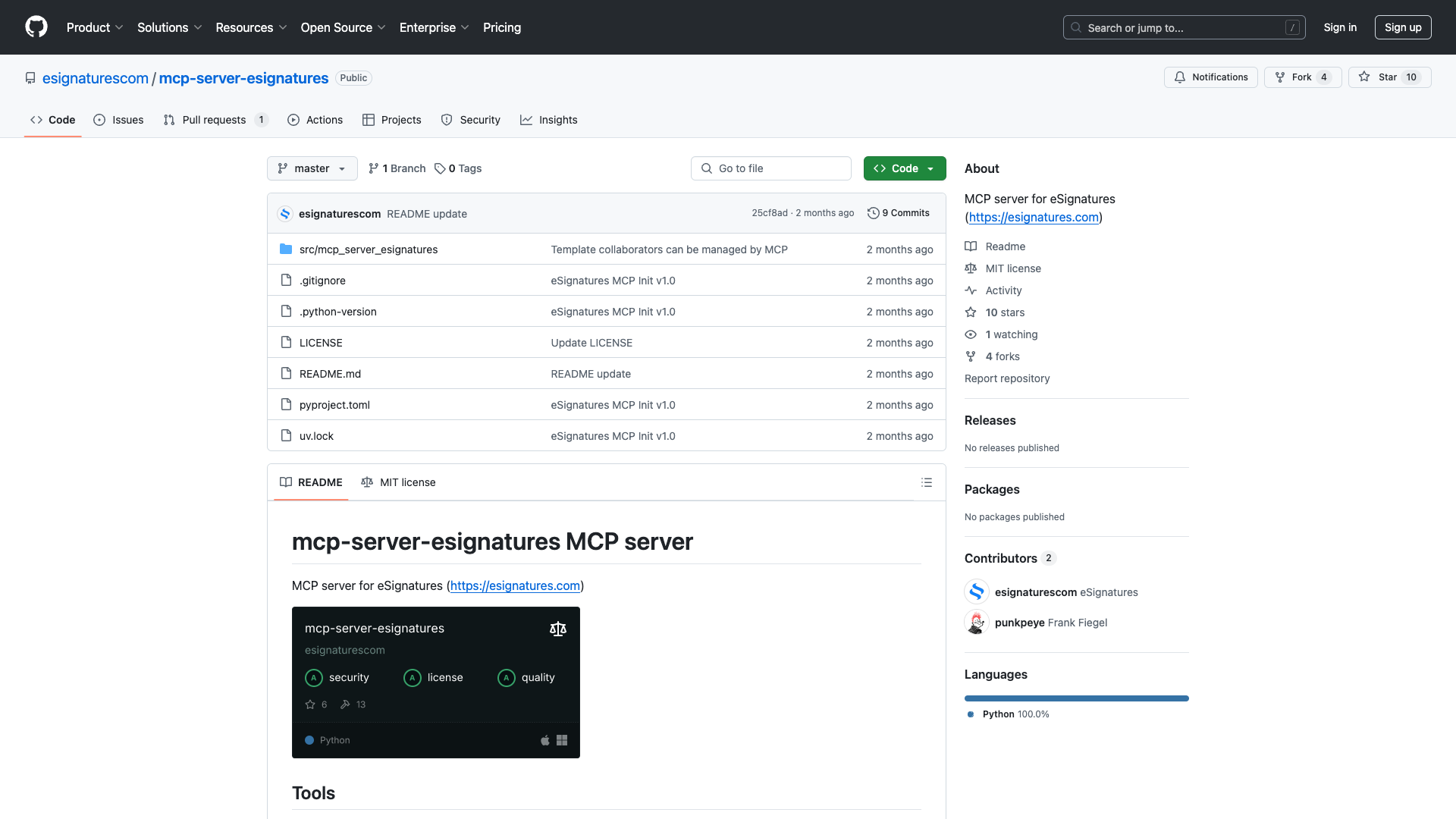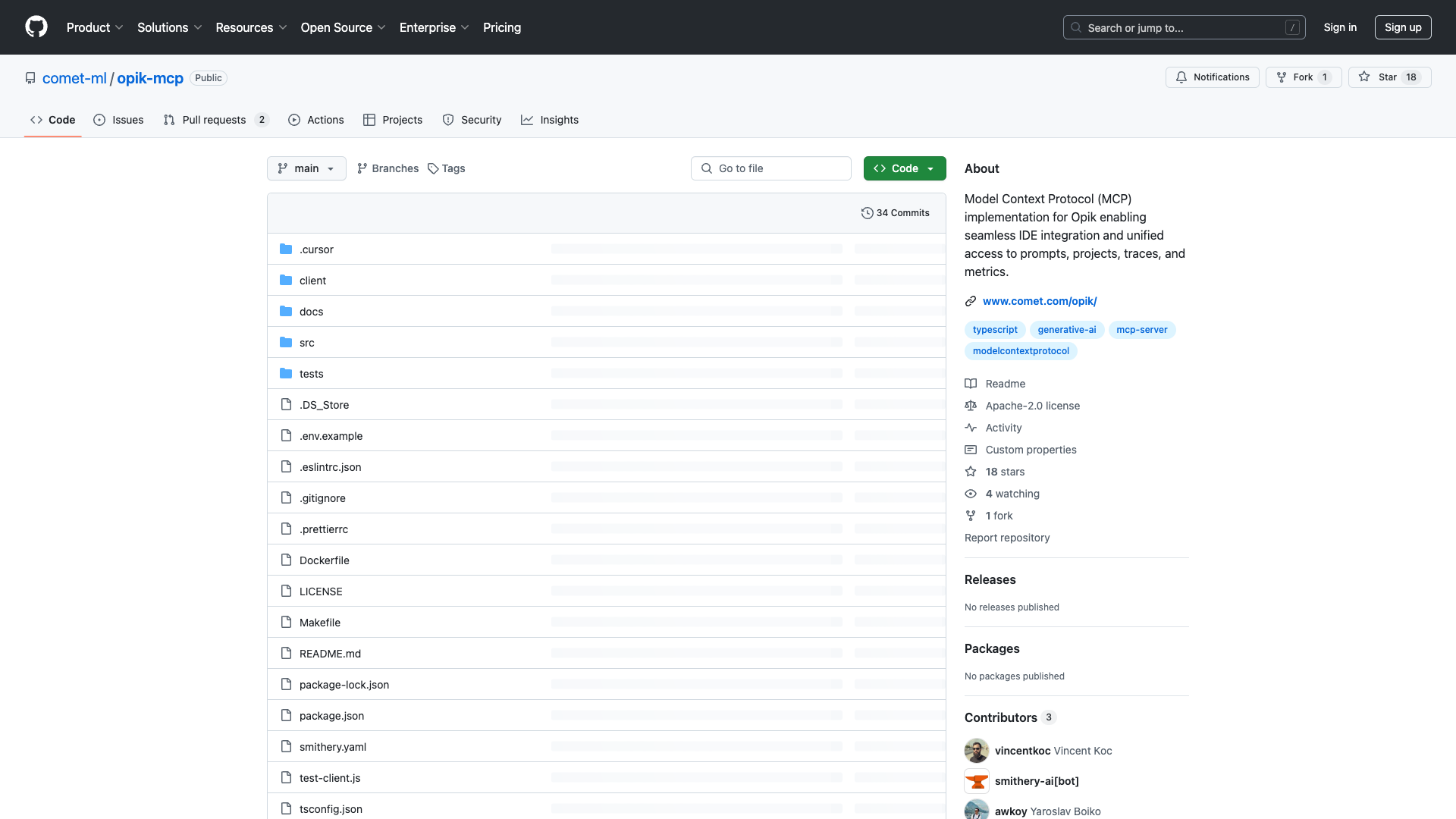Overview of Kagi MCP Server
The Kagi MCP Server is a tailored implementation of the Model Context Protocol (MCP) designed specifically for enhancing the Kagi search experience. Developed by the Kagisearch team, this server aims to provide improved access and functionality within the Kagi ecosystem, particularly beneficial for developers and technical professionals who seek to integrate advanced search capabilities into their applications.
Getting Started with Kagi MCP
The setup process for the Kagi MCP server is straightforward and well-documented, which is essential for busy professionals often juggling multiple tasks. The server operates in conjunction with Kagi's innovative search API, currently in a closed beta phase, requiring interested users to request access via [email protected]. The repository on GitHub provides comprehensive instructions for setting up and running your own instance of the MCP server across various operating systems, including MacOS, Linux, and Windows.
To get started, users must install 'uv', a command-line utility that facilitates efficient execution of Python scripts. The installation commands are clearly laid out for different platforms, ensuring ease of setup regardless of user preference. Once 'uv' is installed, users can configure their environment variables, including their unique KAGI_API_KEY, to authenticate requests made through the MCP server.
Setup Process Breakdown
- Access Kagi's Search API: Reach out via email at [email protected] for access.
- Install 'uv': Follow the platform-specific commands provided in the documentation.
- Clone the Repository: Use the command
git clone https://github.com/kagisearch/kagimcp.git to get the server files.
- Create a Virtual Environment: This ensures that dependencies are managed separately, reducing conflicts with other projects.
- Install Dependencies: Use the provided commands to sync necessary libraries required by the application.
- Configure Settings: Adjust the
claude_desktop_config.json file to specify commands and environmental variables.
- Run Commands: Execute commands either through MCP CLI tools or using npx commands based on your preferences.
- Access the Inspector Tool: After deployment, access the localhost URL to utilize the inspector tools for real-time interaction.
Key Features of Kagi MCP Server
- Customizable Environment Variables: Easily configure environment variables like
KAGI_API_KEY for seamless integration.
- Cross-Platform Compatibility: Detailed installation procedures ensure deployment on MacOS, Linux, or Windows is effortless.
- Robust Logging Mechanism: Adjust log levels dynamically to enhance debugging processes tailored to individual project needs.
- Interactive Inspector Tool: Access a web interface for real-time inspection of interactions during development.
User Experience and Impressions
Having recently installed and utilized the Kagi MCP server, the overall experience has been positive. The setup process is efficient, with clear instructions that cater to both MacOS/Linux and Windows users. The use of 'uv' as a command-line utility simplifies running Python scripts, although additional context around its advantages could enhance user understanding.
The customizable environment variables resonate well with developers who value autonomy in their workflows. Cross-platform compatibility is a significant advantage, allowing diverse teams to work seamlessly without the need for standardization on a single platform.
The robust logging mechanism adds transparency during development, enabling effective debugging tailored to specific project needs. The interactive inspector tool stands out, providing real-time feedback that enhances efficiency during query fine-tuning stages.
Areas for Improvement
While the Kagi MCP server excels in many areas, there are opportunities for enhancement. The documentation could benefit from additional examples showcasing common pitfalls during initial configurations. Enhanced analytics capabilities tied directly into performance metrics would also be valuable, aligning with the data-driven decision-making culture prevalent in tech industries today.
Moreover, fostering a more visible community engagement beyond GitHub could help build trust among potential adopters. Engaging discussions or forums could enhance collective knowledge sharing, benefiting future iterations of the server.
Conclusion
In summary, the Kagi MCP server represents a significant advancement in querying methods when interfacing with Kagi's proprietary API services. The straightforward setup instructions and customizable options cater effectively to developers' needs, aligning with current trends in software engineering. Overall satisfaction remains high, and there is anticipation for further enhancements that will allow even greater control in integrating modern AI solutions into various workflows.
Open Link


